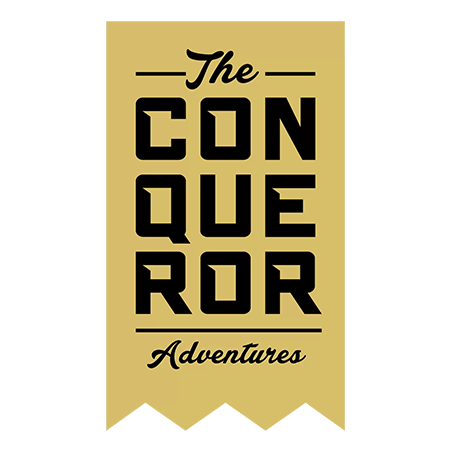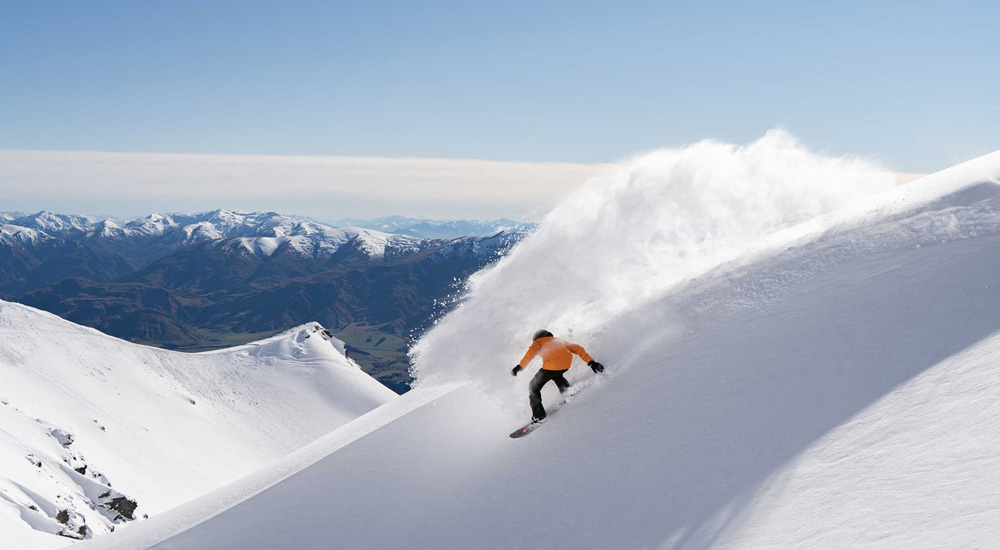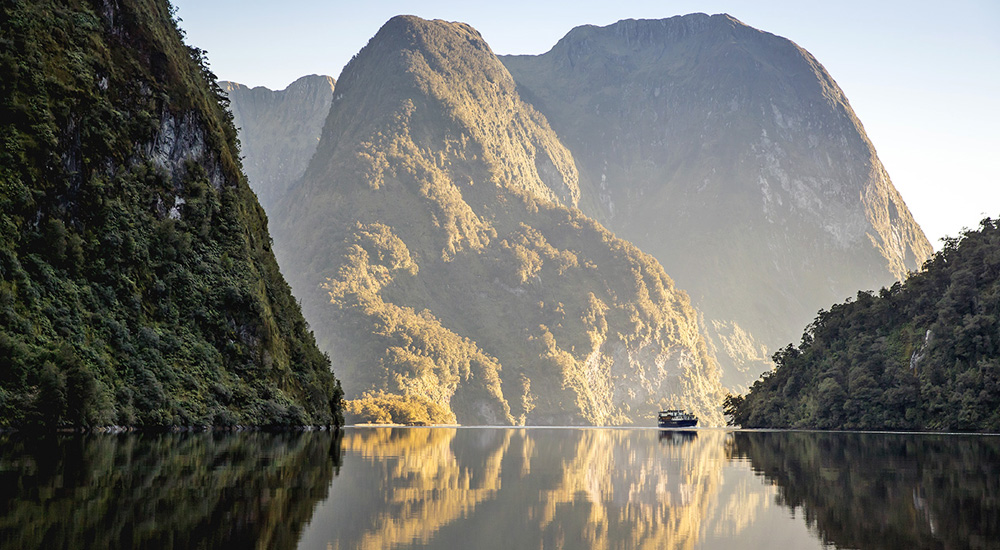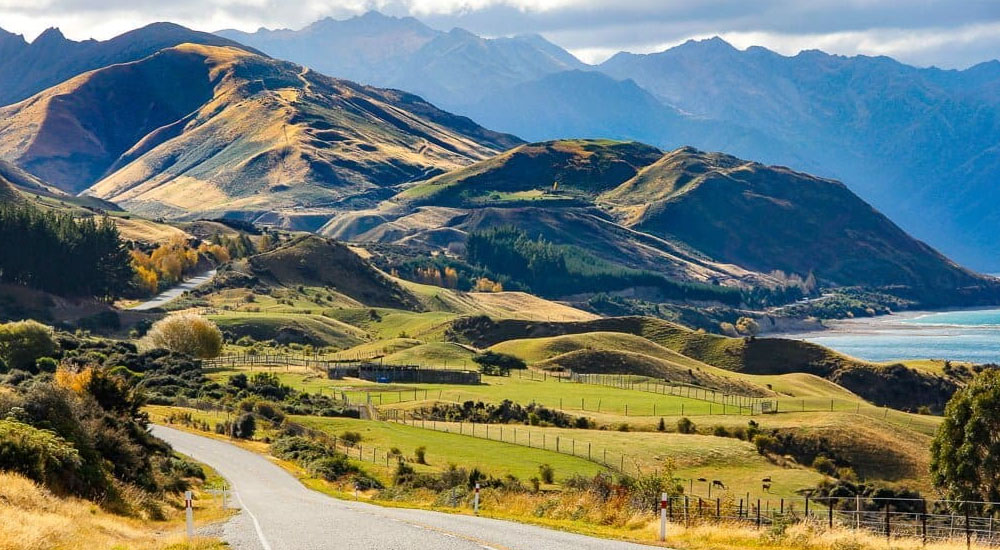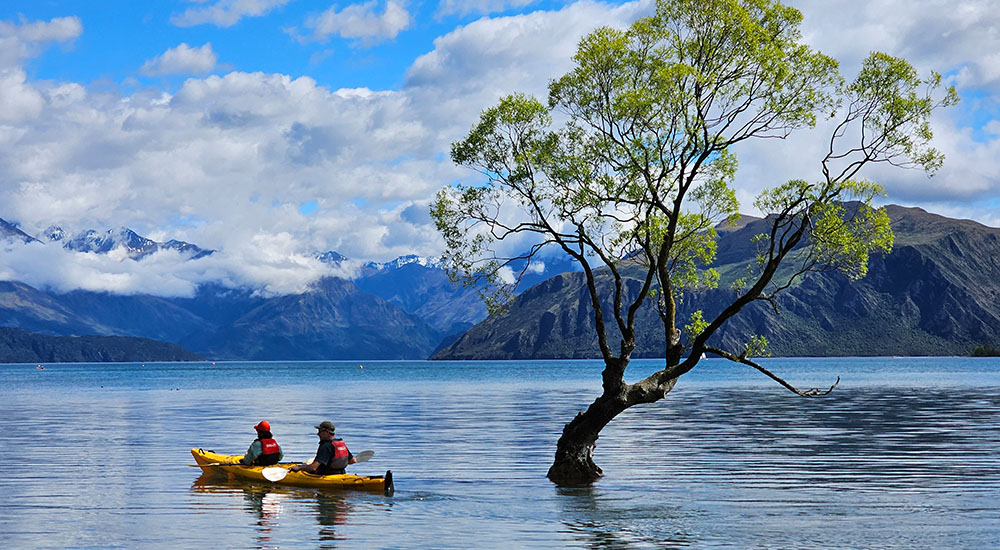The 14 Must-Do Cultural Experiences in New Zealand
Kia ora, explorers! Phil Boorman here, your local Kiwi adventurer. While New Zealand is renowned for its stunning landscapes, it’s the rich tapestry of cultures that truly sets it apart. From the ancient traditions of the Māori people to the vibrant arts and heritage of its cities and towns, Aotearoa offers a wealth of cultural experiences that will enrich your journey and leave a lasting impression.
So, open your mind and heart, and let’s embark on a cultural adventure through New Zealand’s cultural scene!
The 14 must-do cultural experiences in New Zealand are:
- Experience a Māori Cultural Performance
- Visit a Marae
- Explore Historic Settlements
- Visit Museums and Galleries
- Discover UNESCO World Heritage Sites
- Attend a Festival or Event
- Explore Contemporary Art
- Experience Performing Arts
- Savor Local Foodie Delights
- Explore Wine Regions
- Experience a Hāngī
- Visit Local Markets
- Attend Local Events
- Stay in Locally Owned Accommodation
Embrace Māori Culture
Experience a Māori Cultural Performance
There’s nothing quite like witnessing a Māori cultural performance to truly understand the heart and soul of New Zealand. It’s an experience that will stay with you long after the music fades and the dancers leave the stage. I’ve been fortunate enough to witness many Māori cultural performances throughout the country, and each one has left me with a sense of awe and deep respect for the rich traditions and stories they express.
These performances offer a glimpse into the history, spirituality, and artistry of the Māori people, the indigenous people of Aotearoa (New Zealand). Through powerful singing, intricate poi dances, and the spine-tingling haka, you’ll witness the passion and pride that the Māori have for their culture.
Here are a few places where you can experience captivating Māori cultural performances:
Rotorua (Te Puia):
Te Puia, in the heart of Rotorua, is a geothermal wonderland and a hub of Māori culture. Here, you can witness a traditional Māori cultural performance in an authentic setting, surrounded by geysers, mud pools, and beautifully carved meeting houses. The performances at Te Puia are renowned for their authenticity and energy, showcasing the full spectrum of Māori performing arts, from the graceful poi dances to the powerful haka. You’ll also have the opportunity to learn about Māori carving, weaving, and other traditional crafts.
Auckland (Auckland Museum)
The Auckland Museum, perched on a hilltop overlooking the city, is a treasure trove of Māori and Pacific cultural artifacts. The museum offers daily Māori cultural performances that showcase traditional music, dance, and storytelling. The performances are held in the museum’s stunning Māori Court, a beautifully carved meeting house that provides an authentic setting for the experience.
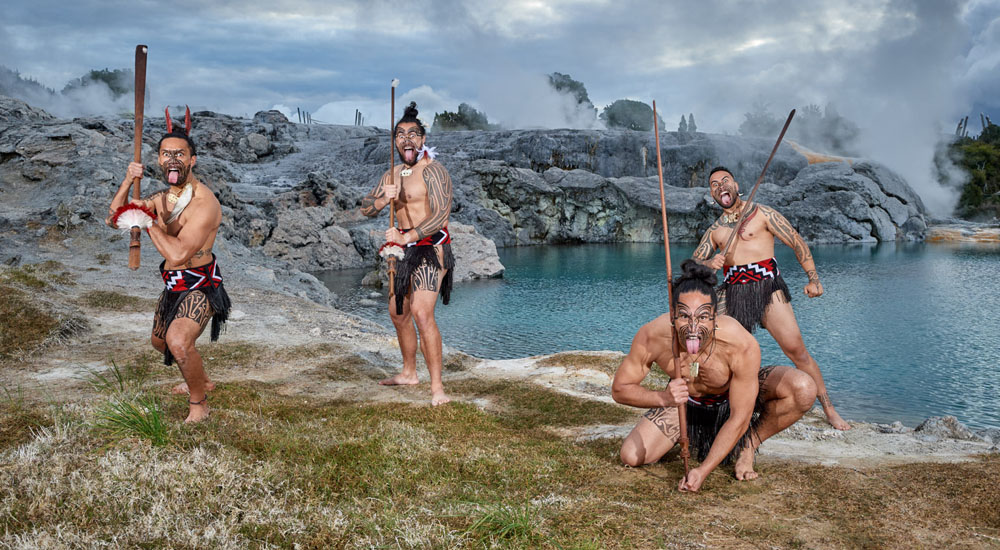
Visit a Marae
A marae is far more than just a meeting place; it’s the heart and soul of a Māori community, a place where culture, history, and spirituality intertwine. Visiting a marae is a privilege, a chance to step into the world of Māori traditions and experience the warmth and hospitality of the tangata whenua (people of the land). I’ve had the honor of being welcomed onto several marae throughout New Zealand, and each time, I’ve come away with a deeper understanding and appreciation for Māori culture.
The marae complex typically includes a wharenui (meeting house), adorned with intricate carvings and symbolic representations of ancestors and stories, a wharekai (dining hall), and a marae ātea (open courtyard) where ceremonies and gatherings take place. The marae is a place where the past, present, and future connect, where stories are shared, and where the community comes together to celebrate, mourn, and make decisions.
One of the most significant aspects of a marae visit is the pōwhiri (welcome ceremony). This traditional ceremony involves formal speeches, waiata (songs), and the hongi (pressing of noses), a symbolic gesture of sharing breath and welcoming visitors. Participating in a pōwhiri is a humbling experience, and it’s important to follow the guidance of your hosts and observe the appropriate protocols.
Here are two places where you can experience the cultural richness of a marae visit:
Rotorua (Mitai Maori Village)
Mitai Maori Village, nestled in a secluded valley near Rotorua, offers an authentic and immersive marae experience. You’ll be welcomed with a traditional pōwhiri, witness a captivating cultural performance that includes the haka and poi dances, and learn about Māori history, traditions, and connection to the land. You’ll also have the opportunity to see a hangi being prepared, a traditional Māori method of cooking food in an underground oven.
Waitangi Treaty Grounds
The Waitangi Treaty Grounds, in the Bay of Islands, is a place of immense historical and cultural significance. It was here, in 1840, that the Treaty of Waitangi was signed between Māori chiefs and representatives of the British Crown. A visit to the Waitangi Treaty Grounds includes a tour of the historic site, a cultural performance, and the opportunity to learn about the Treaty’s ongoing significance for New Zealand. You can also visit the beautifully carved meeting house, Te Whare Rūnanga, and experience a traditional pōwhiri.
Visiting a marae is an opportunity to step outside your comfort zone, engage with another culture, and gain a deeper understanding of the Māori world. It’s an experience that will enrich your journey through New Zealand and leave you with a lasting appreciation for the traditions and values of the tangata whenua.

Explore Māori Art and Crafts
Māori art is more than just aesthetically pleasing; it’s a powerful expression of culture, spirituality, and history. The intricate carvings, weavings, and tattoos tell stories of ancestors, gods, and the natural world, connecting the Māori people to their heritage and their land. I’ve always been fascinated by Māori art, and I find myself drawn to the intricate details and the stories they convey.
Carving (Whakairo)
Carving is a central element of Māori art, traditionally used to adorn meeting houses, weapons, tools, and ornaments. The most common material is wood, but bone, stone, and greenstone (pounamu) are also used. Each carving tells a story, with recurring motifs like the tiki (human-like figure), the manaia (bird-like creature), and the spiral representing different aspects of Māori culture and beliefs.
Weaving (Raranga)
Weaving is another important art form in Māori culture, used to create a variety of items, from clothing and baskets to mats and fishing nets. The most common material is flax, but other natural fibers like kiekie and pingao are also used. Māori weaving is known for its intricate patterns and designs, each with its own symbolic meaning.
Tattooing (Tā moko)
Tā moko, traditional Māori tattooing, is more than just body art; it’s a powerful expression of identity and connection to whakapapa (ancestry). The intricate designs, unique to each individual, tell the story of their family history, status, and achievements. Tā moko is a sacred practice, and it’s important to understand its cultural significance before considering getting one.
Here are some of the best places to experience Māori art and crafts:
Rotorua (Te Puia)
Te Puia, in Rotorua, is home to the New Zealand Māori Arts and Crafts Institute, where you can witness master carvers and weavers at work. You can observe the intricate process of creating traditional Māori art, learn about the symbolism behind the designs, and even purchase authentic pieces to take home as souvenirs.
Auckland (Auckland Museum)
The Auckland Museum houses an impressive collection of Māori artifacts, including intricately carved meeting houses, weapons, tools, and ornaments. You can also see examples of traditional weaving and learn about the history and significance of tā moko.
Te Papa Tongarewa (Wellington)
Te Papa Tongarewa, New Zealand’s national museum, boasts a vast collection of Māori taonga (treasures), including carvings, weavings, and contemporary art. The museum also offers interactive exhibits and workshops where you can learn about Māori art and culture.
Exploring Māori art and crafts is a journey into the heart of New Zealand’s indigenous culture. It’s a chance to appreciate the artistry, symbolism, and stories that are woven into these ancient traditions. Whether you’re admiring a masterpiece in a museum or participating in a workshop, you’ll gain a deeper understanding of the Māori people and their connection to the land and their heritage.

New Zealand’s history is a captivating blend of Māori heritage and European settlement, shaped by exploration, trade, conflict, and cultural exchange. To truly understand this fascinating past, there’s nothing quite like stepping back in time and exploring the country’s historic settlements. These towns and villages offer a glimpse into bygone eras, with their preserved architecture, fascinating museums, and stories that bring history to life.
Dunedin
Dunedin, nestled on the southeastern coast of the South Island, is a city steeped in Scottish heritage. Founded by Scottish settlers in the mid-19th century, Dunedin retains a distinct Victorian and Edwardian charm, with grand buildings, ornate churches, and beautiful gardens. Take a stroll down Princes Street, the city’s main thoroughfare, and admire the architectural gems, including the Dunedin Railway Station, the Dunedin Public Art Gallery, and the First Church of Otago.
Don’t miss a visit to Olveston Historic Home, a beautifully preserved Edwardian mansion that offers a glimpse into the lifestyle of a wealthy Dunedin family in the early 20th century. And for a taste of Dunedin’s industrial heritage, head to the Toitū Otago Settlers Museum, which tells the stories of the region’s early settlers and industries, including whaling, gold mining, and wool production.
Akaroa
Akaroa, a charming village nestled on the Banks Peninsula, boasts a unique French connection. In the 1840s, French settlers arrived in Akaroa with the intention of establishing a French colony. Although their plans were thwarted by the British, Akaroa retains a distinct French flavor, with street names like Rue Lavaud and Rue Jolie, and charming colonial cottages.
Take a stroll along the waterfront and admire the historic buildings, including the Akaroa Museum, which houses a collection of Māori and European artifacts, and the Langlois-Eteveneaux House, a beautifully preserved French colonial cottage. You can also learn about the region’s volcanic history at the Giant’s House, a whimsical garden with mosaic sculptures and quirky architecture.
Russell
Russell, in the Bay of Islands, is one of New Zealand’s oldest European settlements. Once a bustling whaling port and trading center, Russell has a colorful and sometimes turbulent history. Today, it’s a charming town with a relaxed atmosphere and a wealth of historic sites.
Visit Christ Church, New Zealand’s oldest surviving church, and the Pompallier Mission, a beautifully restored printery that produced religious texts in the Māori language. You can also explore the Russell Museum, which tells the story of the town’s fascinating past, or take a walk up Flagstaff Hill for panoramic views of the Bay of Islands.
Kerikeri
Kerikeri, another historic settlement in the Bay of Islands, is known for its well-preserved mission buildings and its beautiful stone store. The Kerikeri Mission Station, established in 1819, is a fascinating complex of historic buildings, including the Stone Store, New Zealand’s oldest stone building, and Kemp House, the oldest surviving European house in the country.
Explore the mission grounds and learn about the early interactions between Māori and missionaries, and the challenges and triumphs of early European settlement in New Zealand. You can also visit the Rewa’s Village, a replica Māori village that offers insights into traditional Māori life.
Exploring these historic settlements is like stepping back in time, offering a glimpse into the lives of early settlers, the challenges they faced, and the cultural exchanges that shaped New Zealand’s identity. It’s a journey of discovery that will enrich your understanding of this fascinating country and its rich history.

Visit Museums and Galleries
Museums and galleries are like portals to the past, present, and future, offering glimpses into different worlds, cultures, and perspectives. I’ve always been fascinated by museums, and I find that they enrich my travels by providing context, understanding, and a deeper appreciation for the places I visit. New Zealand is home to a wealth of museums and galleries, each with its own unique collection and story to tell. Here are a few of my favorites:
Te Papa Tongarewa (Wellington)
Te Papa Tongarewa, New Zealand’s national museum, is a must-visit for anyone interested in the country’s rich history, art, and culture. Located on Wellington’s waterfront, Te Papa is a modern and interactive museum that brings stories to life through engaging exhibits and innovative displays.
I love wandering through Te Papa’s galleries, discovering treasures from New Zealand’s past and present. The museum’s collection includes everything from Māori taonga (treasures) and colonial artifacts to contemporary art and natural history specimens. One of my favorite exhibits is the colossal squid, a massive creature that was caught off the coast of New Zealand in 2007. It’s a truly awe-inspiring sight!
Te Papa also offers a variety of temporary exhibitions, events, and educational programs, making it a dynamic and engaging place to visit. And with its stunning location on the waterfront, it’s the perfect place to spend a day exploring the heart and soul of New Zealand.
Auckland War Memorial Museum
The Auckland War Memorial Museum, perched on a hilltop overlooking the city, is a poignant reminder of New Zealand’s wartime sacrifices and a celebration of its rich cultural heritage. The museum’s collection spans Māori and Pacific cultures, natural history, and military history, offering a fascinating glimpse into the country’s diverse past.
I’m always moved by the museum’s War Memorial galleries, which honor the New Zealanders who served in conflicts around the world. The exhibits tell personal stories of courage and sacrifice, and they serve as a powerful reminder of the human cost of war.
The museum also houses an impressive collection of Māori and Pacific artifacts, including intricately carved meeting houses, weapons, tools, and ornaments. You can also learn about the natural history of New Zealand, from its unique flora and fauna to its geological formations and volcanic landscapes.
Otago Museum (Dunedin)
The Otago Museum, located in the heart of Dunedin, is a treasure trove of natural and cultural wonders. The museum’s collection spans a wide range of disciplines, including Māori culture, Pacific cultures, natural history, science, and technology. It’s a place where you can learn about everything from dinosaurs and ancient Egypt to the history of New Zealand’s South Island and the fascinating world of insects.
One of the highlights of the Otago Museum is its Tūhura Otago Community Trust Science Centre, an interactive space where you can explore the wonders of science through hands-on exhibits and experiments. It’s a great place for families and anyone who loves to learn about the world around them.
The museum also houses a fascinating collection of Māori and Pacific artifacts, including intricately carved meeting houses, traditional weapons, and beautiful textiles. You can also learn about the history of Dunedin and the Otago region, from its early Māori inhabitants to the gold rush era and beyond.
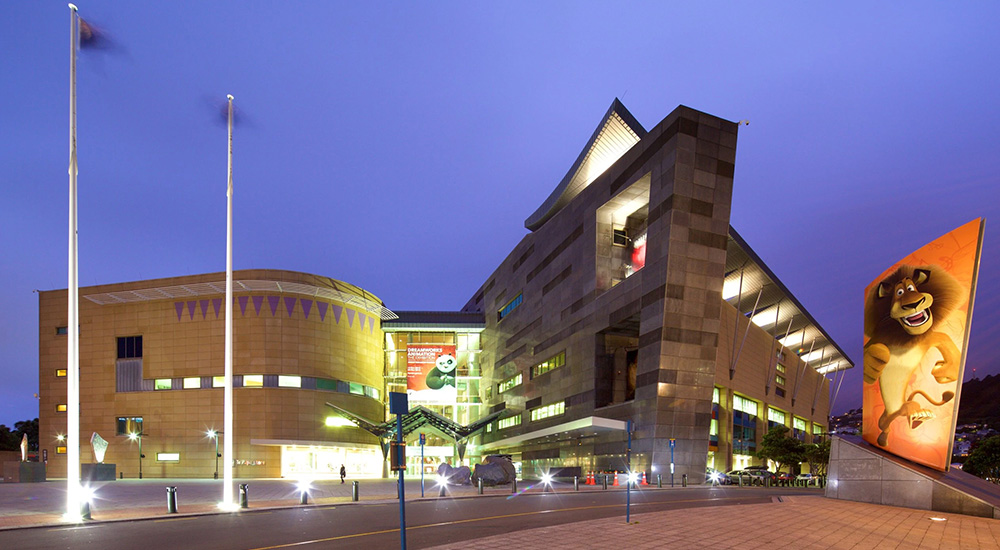
New Zealand is a land of breathtaking beauty, and it’s no surprise that some of its most spectacular landscapes and cultural treasures have been recognized by UNESCO as World Heritage Sites. These sites are considered to be of outstanding universal value, representing the best of our planet’s natural and cultural heritage. I’ve had the privilege of exploring all three of New Zealand’s World Heritage Sites, and each one has left a lasting impression on me.
Tongariro National Park
Tongariro National Park, in the central North Island, holds a special place in New Zealand’s history. It was the first national park established in the country, and it was also the first in the world to be gifted by a Māori chief to the nation. The park’s volcanic peaks, Ngauruhoe, Ruapehu, and Tongariro, are sacred to the Māori people and play a significant role in their cultural and spiritual beliefs.
Tongariro’s dual World Heritage status recognizes both its natural and cultural significance. The park’s volcanic landscapes are truly awe-inspiring, with dramatic peaks, craters, lava flows, and geothermal areas. But it’s the connection between the land and the Māori people that makes Tongariro so special. The mountains are seen as ancestors, and the park is a place of deep spiritual significance.
I’ve hiked the Tongariro Alpine Crossing, one of the most popular trails in the park, and it’s an experience I’ll never forget. The views of the volcanic peaks, the vibrant Emerald Lakes, and the surrounding landscape are simply breathtaking. It’s a walk that connects you to the raw power of nature and the rich cultural heritage of the Māori people.
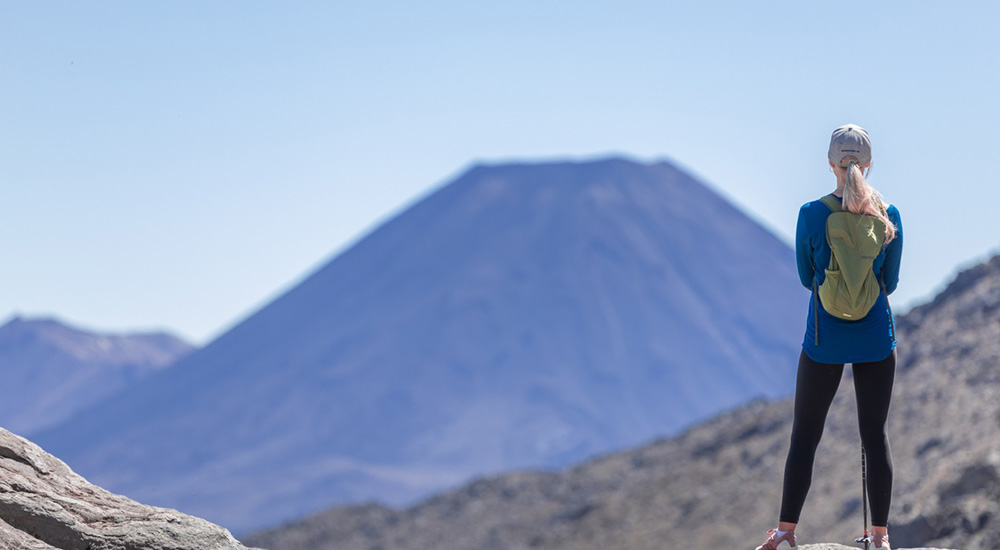
Te Wahipounamu – South West New Zealand
Te Wahipounamu, a vast wilderness area on the South Island, is a testament to the power of nature to shape breathtaking landscapes. This World Heritage Site encompasses four national parks: Fiordland, Westland Tai Poutini, Aoraki/Mount Cook, and Mount Aspiring. Together, they protect a diverse range of ecosystems, from towering mountains and glaciers to pristine fiords, rainforests, and coastal areas.
Te Wahipounamu is also home to a rich Māori cultural heritage. The area was once a major source of greenstone (pounamu), a precious stone that holds great significance in Māori culture. The mountains, rivers, and forests of Te Wahipounamu are steeped in Māori legends and traditions, and the area continues to be a place of cultural importance for many Māori people.
I’ve spent many weeks exploring Te Wahipounamu, and I’m always amazed by its sheer scale and diversity. From kayaking in Milford Sound to hiking the Routeburn Track, I’ve had countless unforgettable experiences in this wilderness paradise. It’s a place that truly captures the essence of New Zealand’s wild beauty.
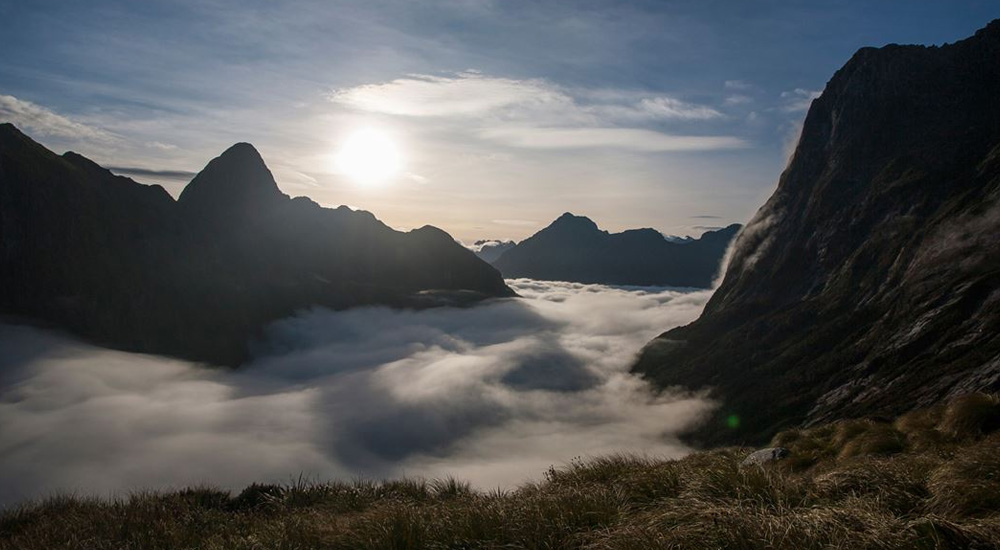
Attend a Festival or Event
New Zealand’s vibrant cultural scene comes alive through its diverse and exciting festivals and events. From music and arts festivals that draw international crowds to quirky local celebrations and cultural gatherings, there’s something to suit every taste and interest. I love the energy and excitement of festivals, and I always try to catch a few whenever I’m traveling around New Zealand. Here are a few of my top picks:
WOMAD (New Plymouth)
WOMAD (World of Music, Arts and Dance) is a truly global festival that celebrates the diversity of cultures through music, dance, and art. Held annually in New Plymouth, on the west coast of the North Island, WOMAD brings together artists from around the world, creating a vibrant and eclectic atmosphere.
I’ve been to WOMAD a few times, and it’s always an incredible experience. The music is diverse and inspiring, ranging from traditional folk music to contemporary world beats. The festival also features dance performances, art installations, workshops, and delicious food stalls, making it a feast for the senses. WOMAD is a celebration of cultural diversity and a reminder of the power of music and art to connect people from all walks of life.
Rhythm and Vines (Gisborne)
Rhythm and Vines, held in Gisborne on the North Island’s East Cape, is New Zealand’s biggest New Year’s Eve festival. It’s a celebration of music, summer, and good vibes, with a focus on electronic and dance music. The festival attracts top international and local DJs and musicians, creating an electric atmosphere that lasts for three days and nights.
I’ve heard great things about Rhythm and Vines, and it’s definitely on my festival bucket list. The festival is held in a beautiful vineyard setting, with stunning views of the coastline. It’s the perfect place to ring in the New Year with friends, dance the night away, and soak up the summer vibes.
Hokitika Wildfoods Festival
The Hokitika Wildfoods Festival, held annually on the West Coast of the South Island, is a unique and quirky celebration of the region’s wild foods. From huhu grubs and mountain oysters to whitebait fritters and venison pies, the festival offers a chance to sample some unusual and delicious local delicacies.
I’ve been to the Hokitika Wildfoods Festival, and it’s definitely an experience to remember! It’s not for the faint of heart, but if you’re adventurous and open to trying new things, you’re sure to have a blast. The festival also features live music, cooking demonstrations, and a lively atmosphere that celebrates the West Coast’s unique character.
World Buskers Festival (Christchurch)
The World Buskers Festival, held in Christchurch, is a celebration of street performance and entertainment. The festival attracts talented buskers from around the world, showcasing a diverse range of skills, from comedy and acrobatics to magic and music.
I love the energy and creativity of the World Buskers Festival. The streets of Christchurch come alive with laughter, applause, and the unexpected. It’s a great way to experience the city’s vibrant atmosphere and be entertained by some of the world’s most talented street performers.

Explore Contemporary Art
New Zealand’s contemporary art scene is a vibrant and dynamic reflection of the country’s unique identity, blending Māori traditions with modern influences and global perspectives. I’m always inspired by the creativity and innovation of New Zealand artists, and I love exploring galleries and studios to discover new works and connect with the artistic spirit of Aotearoa.
Whether you’re drawn to painting, sculpture, photography, or mixed media, you’ll find a wealth of contemporary art to explore in New Zealand. From large-scale installations to intimate portraits, the country’s artists are pushing boundaries and challenging conventions, creating thought-provoking and visually stunning works.
Here are a few of my favorite places to experience contemporary art in New Zealand:
Auckland Art Gallery Toi o Tāmaki
The Auckland Art Gallery Toi o Tāmaki is New Zealand’s largest art institution, housing a collection of over 17,000 works. The gallery’s collection spans historical, modern, and contemporary art, with a focus on New Zealand and Pacific Island artists. I love spending time in the gallery’s contemporary art spaces, discovering new artists and engaging with thought-provoking exhibitions.
The gallery also hosts a variety of events and programs, including artist talks, workshops, and film screenings. And with its central location in Auckland’s CBD, it’s easy to pop in and explore the latest exhibitions.
City Gallery Wellington
City Gallery Wellington is a contemporary art gallery that showcases innovative and challenging works by New Zealand and international artists. The gallery’s exhibitions are always thought-provoking and engaging, often pushing the boundaries of traditional art forms.
I appreciate City Gallery’s commitment to showcasing diverse voices and perspectives, and I always find something new and interesting to discover there. The gallery also hosts a variety of events, including artist talks, workshops, and performances, making it a vibrant hub for the city’s creative community.
Christchurch Art Gallery Te Puna o Waiwhetū
Christchurch Art Gallery Te Puna o Waiwhetū is a stunning contemporary art gallery that houses a significant collection of New Zealand and international art. The gallery’s light-filled spaces and innovative architecture provide a beautiful backdrop for the artwork on display.
I’m always impressed by the quality and diversity of the exhibitions at Christchurch Art Gallery. The gallery has a strong focus on New Zealand art, showcasing both established and emerging artists. It’s a great place to discover new talent and gain a deeper understanding of the country’s contemporary art scene.
Street Art and Local Talent
Don’t forget to explore the vibrant street art scenes in cities like Auckland and Wellington. These cities are home to some incredibly talented street artists, and their murals and graffiti art add a splash of color and creativity to the urban landscape.
I also encourage you to venture beyond the main centers and discover the hidden gems of New Zealand’s art scene. Many smaller towns and regions have thriving arts communities, with local galleries and studios showcasing the work of talented artists. You might be surprised by what you find!
Exploring New Zealand’s contemporary art scene is a journey of discovery, offering a glimpse into the country’s creative spirit and unique identity. Whether you’re wandering through a major gallery or stumbling upon a hidden gem in a small town, you’re sure to be inspired by the talent and innovation of New Zealand’s artists.
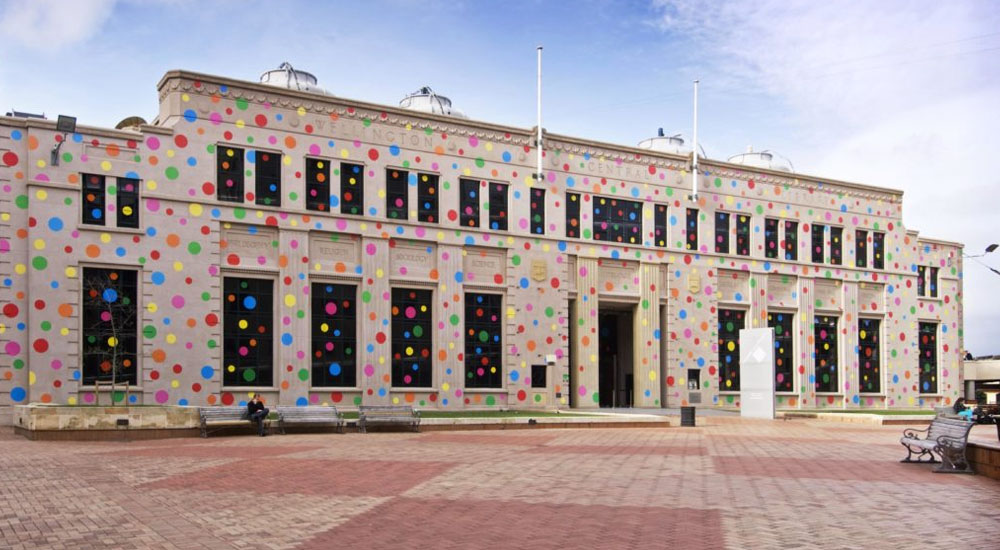
New Zealand’s performing arts scene is a vibrant and dynamic tapestry of creativity, showcasing everything from classic plays and musicals to contemporary dance, opera, and Māori cultural performances. I’ve always been a fan of live performance, and I find that it adds a special spark to my travels, offering a chance to be entertained, moved, and inspired.
Whether you’re a seasoned theatre-goer or simply looking for a unique and memorable experience, New Zealand has something to offer. Here are a few of my favorite venues and performance styles to check out:
The Civic (Auckland):
The Civic, a grand and opulent theatre in the heart of Auckland, is a true landmark of the city. Built in 1929, The Civic is renowned for its stunning architecture, with its ornate interiors and starry ceiling reminiscent of a Moorish palace.
I love catching a show at The Civic. The atmosphere is electric, the acoustics are fantastic, and the venue itself is a work of art. The Civic hosts a variety of performances, including musicals, plays, ballet, opera, and concerts. It’s a great place to experience the best of New Zealand’s performing arts scene.
St James Theatre (Wellington):
The St James Theatre, a beautifully restored heritage theatre in Wellington, is a cultural gem. Built in 1912, the St James has hosted countless performances over the years, from vaudeville shows and silent films to contemporary plays and musicals.
I’ve seen some fantastic productions at the St James Theatre, and I’m always impressed by the intimacy and elegance of the venue. The theatre’s ornate interiors and comfortable seating create a wonderful atmosphere for enjoying a performance. The St James hosts a variety of shows, including drama, comedy, dance, and music.
Isaac Theatre Royal (Christchurch):
The Isaac Theatre Royal, a historic theatre in Christchurch, is a symbol of the city’s resilience and cultural spirit. Originally built in 1863, the theatre has been lovingly restored after suffering significant damage in the 2011 earthquake.
I admire the dedication and passion that went into restoring the Isaac Theatre Royal to its former glory. It’s a beautiful venue with a rich history, and it’s a testament to the importance of the performing arts in Christchurch. The theatre hosts a variety of performances, including plays, musicals, dance, and opera.
Māori Performing Arts:
Don’t miss the opportunity to experience Māori performing arts, which are an integral part of New Zealand’s cultural landscape. From traditional kapa haka performances to contemporary Māori theatre, these productions offer a unique and powerful insight into Māori culture and storytelling.
Experiencing the performing arts is a wonderful way to engage with New Zealand’s cultural scene and be entertained, moved, and inspired. So, take a seat, let the lights dim, and prepare to be transported to another world!

Savor Local Foodie Delights
New Zealand’s culinary scene is a delicious reflection of its diverse cultural heritage and its abundant natural resources. From fresh seafood and locally sourced produce to innovative fusion cuisine and international influences, there’s something to tantalize every taste bud. I love exploring the country’s diverse food scene, discovering hidden gems and savoring the flavors of Aotearoa.
Queenstown
Queenstown, nestled amidst the stunning scenery of the Southern Alps, offers a vibrant and cosmopolitan dining scene. You’ll find everything from casual cafes and pubs to award-winning restaurants serving up innovative cuisine.
- Fergburger: No trip to Queenstown is complete without a visit to Fergburger, a local institution renowned for its gourmet burgers. Be prepared to queue, but trust me, it’s worth the wait!
- Botswana Butchery: If you’re looking for a fine dining experience, Botswana Butchery is a top choice. This sophisticated steakhouse serves up prime cuts of meat, fresh seafood, and an extensive wine list.
- The Bunker: For a more intimate and quirky dining experience, head to The Bunker, a hidden gem tucked away down a laneway. They offer delicious tapas and cocktails in a cozy and atmospheric setting.
- Bespoke Kitchen: This award-winning cafe is a local favorite, known for its fresh, seasonal produce and stunning lake views. It’s a great spot for breakfast, brunch, or lunch.
Wellington
Wellington, the vibrant capital city, is a foodie’s paradise. With its diverse population and thriving cafe culture, Wellington offers a melting pot of culinary delights.
- Logan Brown: This award-winning restaurant is a Wellington institution, serving up innovative and sophisticated cuisine with a focus on local ingredients.
- Ortolana: This restaurant champions seasonal and organic produce, creating delicious dishes that showcase the best of New Zealand’s bounty.
- Shepherd: This cozy and welcoming restaurant offers a modern take on classic New Zealand dishes, with a focus on local and sustainable ingredients.
- Fidel’s Cafe: This iconic cafe is a Wellington favorite, known for its delicious brunch and coffee.
Auckland
Auckland, the City of Sails, is a multicultural hub with a vibrant and diverse food scene. You’ll find everything from authentic Asian cuisine to modern European fare, and everything in between.
- The Grove: This award-winning restaurant offers a sophisticated dining experience with a focus on seasonal and locally sourced ingredients.
- Sidart: This innovative Indian restaurant serves up modern and creative dishes that push the boundaries of traditional Indian cuisine.
- Depot Eatery & Oyster Bar: This casual and buzzing eatery offers fresh seafood, local produce, and a lively atmosphere.
- Giapo: This award-winning ice creamery is a must-visit for those with a sweet tooth. They offer unique and innovative flavors, using fresh and local ingredients.
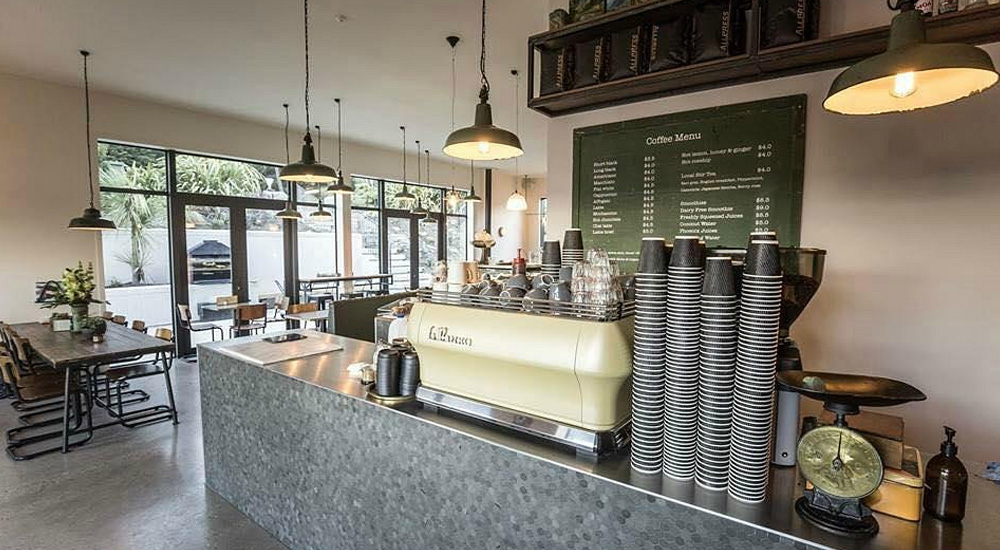
Explore Wine Regions
New Zealand’s wine scene has exploded onto the global stage in recent decades, and for good reason. Our diverse climate and fertile soils produce some of the world’s most acclaimed wines, particularly Sauvignon Blanc and Pinot Noir. I’ve always enjoyed a good glass of wine, and I love exploring New Zealand’s wine regions, meeting the passionate winemakers, and savoring the unique flavors of each region.
If you’re a wine enthusiast, or simply curious to learn more about New Zealand’s winemaking culture, here are a few regions I highly recommend visiting:
Marlborough
Marlborough, at the top of the South Island, is New Zealand’s largest and most famous wine region. It’s renowned for its Sauvignon Blanc, a vibrant and aromatic wine with distinctive citrus and tropical fruit flavors. The region’s sunny climate and free-draining soils create ideal conditions for growing Sauvignon Blanc grapes, and Marlborough’s wineries have perfected the art of producing world-class wines.
I love visiting Marlborough in the summertime. The vineyards are lush and green, the weather is warm and sunny, and the cellar doors are buzzing with visitors. Many wineries offer tours and tastings, giving you a behind-the-scenes look at the winemaking process and a chance to sample their award-winning wines.
Some of my favorite Marlborough wineries include Cloudy Bay, Brancott Estate, and Saint Clair Family Estate. But with over 40 wineries in the region, there’s something to suit every taste and budget. And don’t forget to pair your wine tasting with some delicious local cuisine, such as fresh seafood or a gourmet cheese platter.
Central Otago
Central Otago, in the heart of the South Island, is a region of dramatic contrasts, with rugged mountains, deep gorges, and pristine lakes. It’s also home to some of New Zealand’s most acclaimed Pinot Noir, a complex and elegant red wine with flavors of cherry, plum, and spice. The region’s cool climate and schist soils create ideal conditions for growing Pinot Noir grapes, and Central Otago’s wineries have earned a reputation for producing world-class wines.
I find Central Otago to be a truly captivating wine region. The scenery is stunning, the wineries are often boutique and family-owned, and the winemakers are passionate about their craft. Many wineries offer tours and tastings, where you can learn about the unique challenges and rewards of growing grapes in this challenging environment.
Some of my favorite Central Otago wineries include Felton Road, Rippon Vineyard, and Gibbston Valley Winery. But with over 200 wineries in the region, there’s plenty to explore. And be sure to take some time to enjoy the region’s other attractions, such as hiking, biking, and exploring the historic gold mining towns.
Hawke’s Bay
Hawke’s Bay, on the east coast of the North Island, is New Zealand’s second-largest wine region and one of its oldest. The region’s warm, sunny climate and fertile soils are ideal for growing a variety of grape varieties, including Chardonnay, Merlot, Cabernet Sauvignon, and Syrah. Hawke’s Bay is also known for its elegant and complex red blends.
I enjoy visiting Hawke’s Bay for its relaxed atmosphere and its diverse range of wineries. From large, established wineries to small, boutique operations, there’s something for everyone. Many wineries offer tours and tastings, where you can learn about the history of winemaking in the region and sample the local wines.
Some of my favorite Hawke’s Bay wineries include Te Mata Estate, Craggy Range, and Elephant Hill. The region is also home to several charming towns and villages, such as Napier, Hastings, and Havelock North, which offer a variety of accommodation, dining, and cultural experiences.
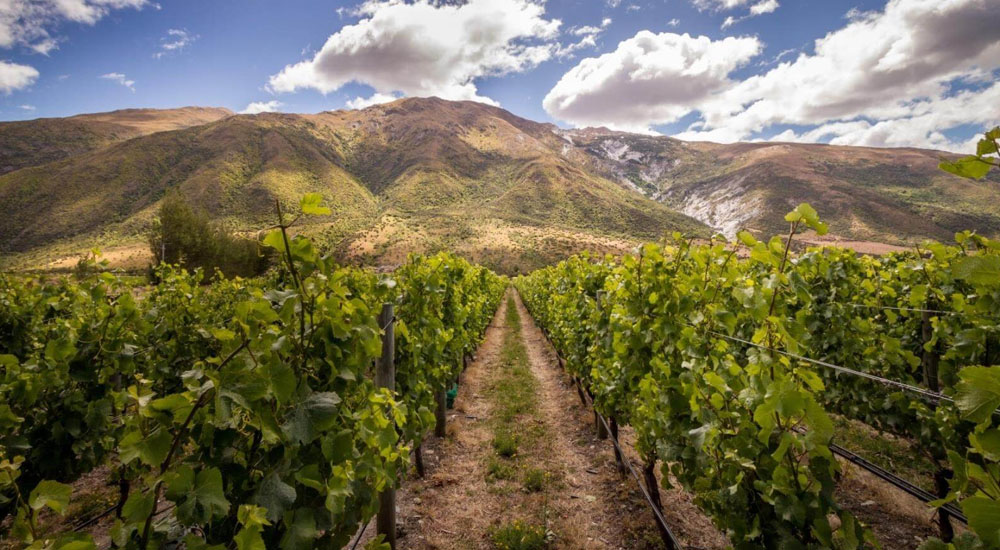
Experience a Hāngī
One of the most memorable ways to connect with Māori culture is through the sharing of kai (food), and there’s no more iconic Māori dish than the hāngī. It’s a traditional method of cooking food in an underground oven, a process that has been passed down through generations and continues to be an important part of Māori celebrations and gatherings. I’ve had the pleasure of experiencing a hāngī on several occasions, and it’s always a feast for the senses – the aroma of the earth, the anticipation as the food is unearthed, and the delicious flavors that result from the slow cooking process.
Preparing a hāngī is a labor of love, involving digging a pit in the ground, lining it with hot stones, and carefully layering the food, which typically includes meat, vegetables, and seafood. The food is then covered with leaves, wet cloth, and soil, trapping the heat and steam to create a natural oven. The hāngī is left to cook for several hours, allowing the flavors to meld and the food to become incredibly tender.
The unveiling of a hāngī is a special occasion, often accompanied by karakia (prayers) and waiata (songs). The food is then shared amongst the group, symbolizing community and connection. The flavors are rich and earthy, with the smoky aroma of the earth infusing the meat and vegetables. It’s a truly unique and delicious experience.
Here are two places where you can experience a traditional hāngī:
Rotorua
Rotorua, with its geothermal wonders and strong Māori presence, is a fantastic place to experience a hāngī. Many Māori cultural villages and attractions in Rotorua offer hāngī feasts as part of their cultural experiences. Te Puia, Mitai Maori Village, and Tamaki Maori Village are just a few of the places where you can enjoy a delicious hāngī and learn about the traditions and customs associated with this unique cooking method.
Waitangi Treaty Grounds
The Waitangi Treaty Grounds, in the Bay of Islands, is another great place to experience a hāngī. The Treaty Grounds offer a hāngī and concert experience, where you can enjoy a traditional feast while being entertained by Māori cultural performances. It’s a wonderful way to learn about Māori history and culture while savoring the delicious flavors of a hāngī.
Beyond Rotorua and Waitangi
While Rotorua and Waitangi are perhaps the most well-known places to experience a hāngī, you may also find opportunities to enjoy this traditional feast at other Māori cultural centers and events throughout New Zealand. Keep an eye out for local festivals, marae visits, and special events that include a hāngī as part of the experience.
A Feast for the Senses
Experiencing a hāngī is more than just a meal; it’s a journey into the heart of Māori culture. It’s a chance to connect with the land, appreciate the traditions and customs of the Māori people, and savor the unique flavors of this ancient cooking method. So, if you have the opportunity to experience a hāngī, don’t miss out! It’s a culinary adventure that will leave a lasting impression.
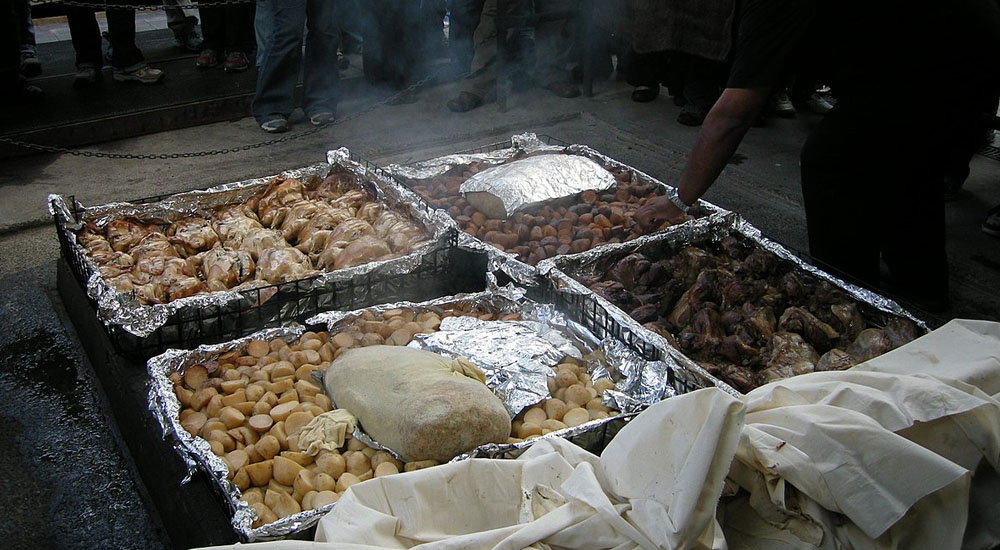
Visit Local Markets
There’s something special about wandering through a local market, surrounded by the sights, sounds, and smells of fresh produce, handcrafted goods, and unique treasures. I love the buzz of a bustling market, the friendly chatter of vendors and shoppers, and the sense of community that fills the air. New Zealand has a fantastic market scene, with vibrant markets popping up in towns and cities across the country. Here are a few of my favorites:
Nelson Market
The Nelson Market, held every Saturday morning in the heart of Nelson, is a vibrant hub of local creativity and community spirit. It’s a place where you can find everything from fresh produce and artisan cheeses to handcrafted jewelry, clothing, and artwork.
I love strolling through the Nelson Market, chatting with the friendly vendors and discovering unique treasures. The market has a relaxed and welcoming atmosphere, and it’s a great place to soak up the local vibe and support small businesses. Be sure to grab a coffee and a pastry from one of the many food stalls and enjoy the live music and entertainment.
Otago Farmers Market (Dunedin)
The Otago Farmers Market, held every Saturday morning in Dunedin, is a celebration of local produce and artisan goods. You’ll find a wide variety of fresh fruits and vegetables, locally raised meats, artisan breads and pastries, and handcrafted gifts.
I always enjoy visiting the Otago Farmers Market when I’m in Dunedin. The quality of the produce is exceptional, and the vendors are passionate about sharing their products and stories. It’s a great place to stock up on delicious local treats and support the local farming community.
Matakana Farmers’ Market (Auckland)
The Matakana Farmers’ Market, held every Saturday morning in the charming village of Matakana, just north of Auckland, is a foodie’s paradise. You’ll find an abundance of fresh, seasonal produce, artisan cheeses, freshly baked bread, and gourmet treats.
The Matakana Farmers’ Market is a great place to escape the city and experience the laid-back charm of rural New Zealand. The market has a vibrant and festive atmosphere, with live music, food stalls, and plenty of opportunities to chat with the local producers and artisans.
Attend Local Events
New Zealand’s cultural tapestry is woven with a vibrant thread of local events and festivals, each offering a unique glimpse into the heart and soul of its diverse communities. From bustling city celebrations to charming rural gatherings, there’s always something happening in Aotearoa, and I encourage you to dive in and experience the local flavor.
Why Attend Local Events?
Local events provide a fantastic opportunity to connect with the community, experience authentic New Zealand culture, and discover the unique character of different regions. Whether you’re interested in music, art, food, sports, or history, there’s an event out there for you.
Here are a few types of local events to look out for:
- Agricultural Shows: These shows celebrate rural life and showcase local produce, livestock, and agricultural traditions. You’ll find everything from sheep shearing competitions and equestrian events to baking contests and craft displays.
- Sporting Events: New Zealanders are passionate about sports, and there are always exciting sporting events happening throughout the country. Catch a rugby game, a cricket match, or a netball tournament, and experience the thrill of live sport and the camaraderie of the crowd.
- Cultural Celebrations: New Zealand’s diverse cultural communities host a variety of celebrations throughout the year, showcasing their traditions, music, dance, and food. These events offer a wonderful opportunity to learn about different cultures and experience the multiculturalism of New Zealand.
- Art Exhibitions and Festivals: New Zealand has a thriving arts scene, with exhibitions and festivals showcasing the work of local and international artists. From painting and sculpture to photography and film, there’s something to inspire and delight art lovers of all tastes.
- Food and Wine Festivals: New Zealand’s culinary scene is a highlight for many visitors, and food and wine festivals offer a chance to sample the best of local produce, artisan goods, and award-winning wines. These festivals are often held in stunning locations, with live music and entertainment adding to the festive atmosphere.
- Community Festivals: Many towns and cities host their own unique community festivals, celebrating local history, culture, and traditions. These festivals often feature parades, live music, food stalls, and family-friendly activities.
Finding Local Events
To discover local events happening during your visit to New Zealand, check out these resources:
- Local council websites: Most local councils have websites that list upcoming events in their region.
- Regional tourism websites: Regional tourism organizations often have comprehensive event calendars on their websites.
- Eventfinda: This website is a great resource for finding events throughout New Zealand.
- Local newspapers and magazines: Local publications often have listings of upcoming events.
- Community notice boards: Keep an eye out for community notice boards in cafes, libraries, and community centers.
Embrace the Local Vibe
Attending local events is a fantastic way to immerse yourself in New Zealand’s vibrant culture and connect with the heart and soul of its communities. So, step off the beaten track, explore beyond the tourist hotspots, and discover the hidden gems of Aotearoa through its local events and festivals. You’ll be surprised by what you find!

Stay in Locally Owned Accommodation
One of the best ways to truly immerse yourself in New Zealand’s culture is to stay in locally owned accommodation. It’s a chance to step off the well-trodden tourist path, connect with the people who call this land home, and experience the genuine warmth and hospitality that Kiwis are known for. I’ve always enjoyed staying in locally owned places – it adds a personal touch to my travels and allows me to discover hidden gems and local insights that I might otherwise miss.
Why Choose Locally Owned Accommodation?
Staying in locally owned accommodation offers a range of benefits:
- Authenticity: You’ll experience a more authentic side of New Zealand, away from the tourist crowds and chain hotels.
- Personal Connection: You’ll have the opportunity to connect with local hosts, learn about their lives, and gain insider tips on the best places to explore.
- Unique Experiences: Locally owned accommodation often offers unique experiences, such as farm stays, homestays, and eco-friendly retreats.
- Support Local Communities: Your stay directly supports local families and businesses, contributing to the economic well-being of the community.
Types of Locally Owned Accommodation
- Bed and Breakfasts: B&Bs offer a cozy and welcoming atmosphere, often with homemade breakfasts and personalized service. It’s a great way to experience Kiwi hospitality and get local recommendations.
- Farm Stays: Farm stays provide a unique opportunity to experience rural life in New Zealand. You can participate in farm activities, learn about agriculture, and enjoy fresh, home-cooked meals.
- Holiday Homes: Holiday homes, or “bachs” as they’re known in New Zealand, offer a self-contained and comfortable option for families and groups. You’ll have the freedom and flexibility to cook your own meals, relax in your own space, and explore the surrounding area at your own pace.
- Boutique Hotels and Lodges: Many boutique hotels and lodges are locally owned and offer a unique and personalized experience. These establishments often feature stylish décor, stunning locations, and exceptional service.
Finding Locally Owned Accommodation
- Bookabach: This website is a great resource for finding holiday homes and baches throughout New Zealand.
- Airbnb: Airbnb offers a wide variety of locally owned accommodation options, from apartments and houses to unique stays like yurts and treehouses.
- Regional tourism websites: Many regional tourism websites have listings of locally owned accommodation options.
- Word of mouth: Ask locals for recommendations on their favorite places to stay.
By choosing to stay in locally owned accommodation, you’ll not only have a more authentic and memorable experience, but you’ll also be supporting the local community and contributing to the sustainable tourism industry in New Zealand. So, ditch the chain hotels and discover the hidden gems of Aotearoa through its welcoming and unique local accommodations.
-
- Do your research: Learn about the cultural customs and traditions of the places you visit.
- Ask permission: Before taking photos or videos of people or cultural sites, ask for permission.
- Dress modestly: When visiting cultural sites, dress modestly and respectfully.
- Listen and learn: Be open to learning about new cultures and perspectives.
- Support local communities: Choose to support local businesses and communities whenever possible.
What are some traditional Māori greetings?
- "Kia ora" (Hello)
- "Tena koe" (To one person)
- "Tena koutou" (To a group of people)
Where can I learn more about Māori mythology and legends?
- Te Papa Tongarewa Museum (Wellington)
- Auckland War Memorial Museum
- Waitangi Treaty Grounds
What are some must-visit cultural attractions in New Zealand?
- Te Papa Tongarewa Museum (Wellington)
- Waitangi Treaty Grounds
- Rotorua (Te Puia, Mitai Maori Village)
- Hobbiton Movie Set (Matamata)
How can I learn some basic Māori phrases?
- Online resources like the Māori Language Commission website
- Language learning apps
- Phrasebooks
New Zealand’s cultural experiences are as diverse and captivating as its landscapes. By embracing the opportunity to learn, connect, and experience different cultures, you’ll gain a deeper appreciation for the unique heritage of Aotearoa and create memories that will last a lifetime. So, embark on your cultural adventure and discover the heart and soul of New Zealand!
You Might Also Like…
The Best Winter Activities in New Zealand
Experience the magic of a New Zealand winter! From skiing and snowboarding to soaking in hot springs and witnessing the Southern Lights, discover unforgettable winter activities and destinations.
The Best Outdoor Activities in Fiordland National Park
Discover the magic of Fiordland National Park, a World Heritage wilderness of towering fiords, cascading waterfalls, and pristine lakes. Explore Milford Sound, Doubtful Sound, and hidden gems on unforgettable adventures.
The 5 Best Scenic Road Trips in New Zealand
Experience the beauty of New Zealand with these 5 unforgettable scenic road trips. Discover stunning landscapes, hidden gems, and unforgettable adventures on the open road.
25
years of
Why Travel With The Conqueror Adventures
When it comes to embarking on extraordinary journeys, you have a choice. So why choose The Conqueror Adventures? Our unwavering commitment to redefining adventure travel sets us apart. We don’t just offer hiking tours; we offer experiences that challenge limits, ignite curiosity, and foster meaningful connections.
Our meticulously crafted adventures are designed to leave a profound and lasting impact, pushing you to step boldly into the uncharted. Discover why adventurers around the world choose to explore with us, and join our global community of explorers, wanderers, and adventure enthusiasts. Your extraordinary journey starts here.
